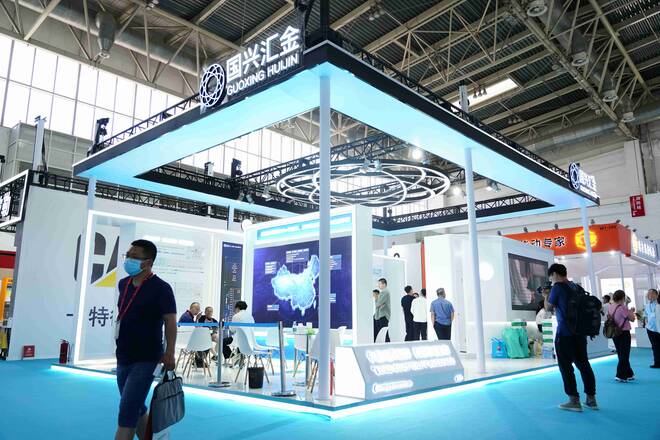Distributed Optical Fiber Sensing: Building a “Protective Wall” for Fire Safety
In the "battlefield" of fire safety, distributed optical fiber sensing technology plays a pivotal role, with applications spanning diverse scenarios and offering profound significance. During fire prevention, utilizing Raman and Brillouin scattering principles, it acts as a sharp "sentinel," with widely deployed fibers monitoring environmental temperatures in real-time. It captures even the slightest temperature increases, enabling ultra-early warning and eliminating monitoring blind spots. In the event of a fire, Optical Time Domain Reflectometry (OTDR) quickly identifies fire origins, aiding firefighters in precise interventions. Moreover, it evaluates the condition of fire safety systems to ensure proper functioning during critical moments. It also supports evacuation guidance and post-fire assessments, safeguarding lives and property.
I. Early Fire Warning
- Principle: Based on Raman scattering and Brillouin scattering, distributed optical fiber sensors monitor environmental temperature changes in real-time. During the early stages of a fire, when temperatures begin to rise abnormally—even before open flames appear—the sensors can detect subtle temperature fluctuations and transmit signals to the monitoring system.
- Advantages: Compared to traditional fire alarms, distributed optical fiber sensing technology offers large-scale, long-distance continuous monitoring with no blind spots. For instance, in large warehouses or factories, a single optical fiber can cover the entire area, quickly identifying potential fire hazards and significantly enhancing the timeliness and accuracy of fire warnings.
II. Fire Location and Alarming
- Principle: Using Optical Time Domain Reflectometry (OTDR), distributed optical fiber sensors can pinpoint the exact location of temperature anomalies. In the event of a fire, the sensors quickly identify the fire's origin and transmit location information to the fire control center, providing robust support for firefighters to respond swiftly and extinguish the fire accurately.
- Advantages: High positioning accuracy, reaching meter-level precision or higher, helps firefighters locate the fire source quickly in complex environments. This improves firefighting efficiency and reduces fire damage. In tunnels, high-rise buildings, and other structurally complex locations, precise fire location is crucial for ensuring safety and controlling fire spread.
III. Monitoring the Condition of Fire Safety Systems
- Principle: Distributed optical fiber sensors monitor the temperature, pressure, and other parameters of fire safety systems, such as fire hoses and sprinkler pipelines, to assess their operational status in real-time.
- Advantages: These sensors can detect faults or damage in fire safety systems, such as pipeline leaks or unopened valves, ensuring the systems function properly during fires. This significantly enhances the reliability and stability of firefighting systems.
IV. Monitoring Flammable and Explosive Areas
- Principle: Optical fibers are inherently passive, immune to electromagnetic interference, and intrinsically safe for explosion-proof environments, making them suitable for use in flammable and explosive areas. Distributed optical fiber sensing technology monitors temperature and leakage in hazardous locations such as petrochemical plants and natural gas storage facilities, preventing fires and explosions.
- Advantages: Unlike traditional electrical sensors, optical fibers eliminate the risk of electric sparks causing explosions. They operate stably and reliably over long periods in dangerous environments, providing robust fire safety assurances in flammable and explosive areas.
V. Evacuation Guidance
- Principle: By integrating distributed optical fiber sensing with intelligent algorithms, real-time monitoring of personnel distribution and movement during a fire is possible. Optical fiber networks laid within buildings can detect behaviors such as walking and crowding, providing dynamic evacuation information to firefighters.
- Advantages: This helps create scientifically sound evacuation plans, guiding people to evacuate quickly and safely, thus increasing survival rates during fires. It also prevents crowding and stampedes during evacuation, ensuring orderly movement.
VI. Post-Fire Assessment and Restoration
- Principle: After a fire, distributed optical fiber sensing technology evaluates damage to building structures. By monitoring temperature variations and strain distribution, it analyzes the impact of the fire on structural integrity, providing data for subsequent restoration work.
- Advantages: The technology rapidly and accurately gathers information on structural damage, helping engineers devise targeted restoration plans. This ensures structural safety and minimizes the long-term impact of fires on buildings.
Conclusion
Distributed optical fiber sensing technology serves as a critical "protective wall" for fire safety, excelling in early fire detection, fire source location, system monitoring, evacuation guidance, and post-fire assessments. Its precision, reliability, and versatility make it a cornerstone of modern fire prevention and control, safeguarding lives and property in diverse and complex

